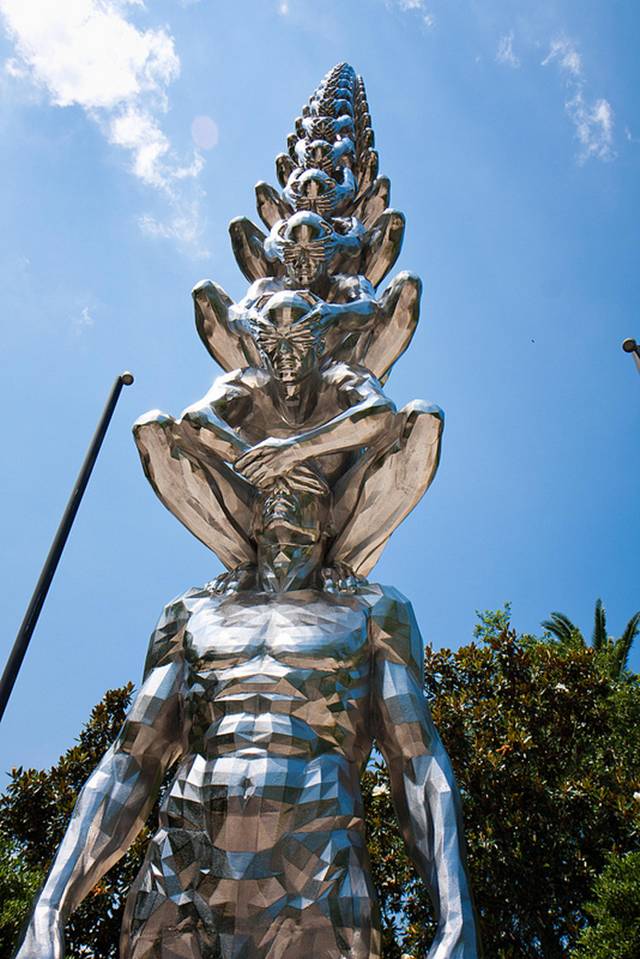{[[' ']]}
']]}
India is a place of many contrasts – as the cliche goes. It has a booming modern economy with a particular strength in IT, as well as ancient bustling markets which looked exactly the same five hundred years ago – minus the cellphones and DVDs.
 People from South India 'celebrate' the Theemithi festival by walking barefoot
across a pit filled with burning hot firewood, or sometimes glowing charcoal.
The fire walking is done in honour of the Hindu goddess Draupati Amman – so
rather than hurrying across the pit, the devotees have to sdo it slowly, as
though it's a walk in the park.
People from South India 'celebrate' the Theemithi festival by walking barefoot
across a pit filled with burning hot firewood, or sometimes glowing charcoal.
The fire walking is done in honour of the Hindu goddess Draupati Amman – so
rather than hurrying across the pit, the devotees have to sdo it slowly, as
though it's a walk in the park.
The ritual begins when the head priest traverses the pit with a pot on his head,
filled with sacred water. He is then followed by other men, who seek to prove
their piety by withstanding the pain. Participants suffer from burns on their
feet – and sometimes worse injuries, on the all-too-common occasions when they
fall into the burning pit.

09. Hooking

The thookam festival sees the backs of devoted Hindus pierced by sharp hooks;
the men are then lifted off the ground onto a scaffold using ropes. Sometimes,
children are even tied to the hands of the participants. Originating from
southern parts of India, the festival has now been banned by the Indian
Government after continued pressure from human rights organizations.
08. Bull Fighting

Unlike its Spanish counterpart, Indian bull-fighting, or Jallikattu, is done without the help of any rope or weapons. Thankfully, the bull's life is also spared afterwards, bovines being famously sacred in India. This Mail was posted in OnlyCuteAngels group. Celebrated during Pongal (harvest thanksgiving), this is one of the most dangerous sports played in India. Youth, ardent for some desperate glory, usually strive either to tame the bull or at least to hang on to the bull for a reward – usually money.
More than a hundred people have been killed in southern India over the past two decades. A case against Jallikattu is ongoing in the Supreme Court of India, which is considering an outright ban on the sport. The bulls are force-fed alcohol; their eyes are sprinkled with chili powder, and their testicles are pinched in an effort to infuriate them.
Made snana has been in practice for over 500 years, but it is now on the verge of being banned. Though restrictions in certain temples had been put up in recent years, these restricitions were lifted after protests from devout Hindus. Members of the Indian government have therefore decided to educate, rather than impose their will upon the people. Good luck to them.

Not studs, but long and sharp needles are used to puncture the tongue. The needles – usually made from wood or steel – can be so long that the tongue is forced to stick out of the mouth permanently, unable to retract. The piercing is common a number of religious festivals. In some regions, young boys and sometimes girls take part in the ritual piercing. The ones who are going to pierce their tongues wear a garland around their necks for a day before the ceremony. The piercing ceremony is usually followed by dancing and merrymaking. These practices are also seen in countries other than India, in southern parts of Asia.












.jpg)












Post a Comment